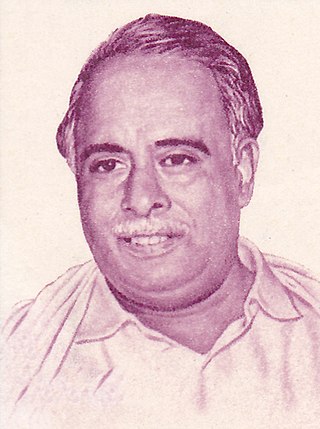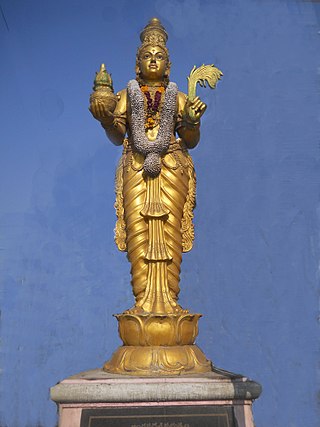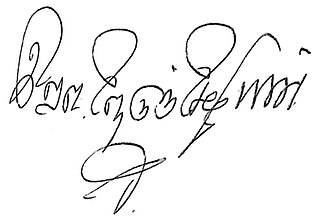Dravidian, Dravidan, or Dravida may refer to:
Dravidian, Dravidan, or Dravida may refer to:

The Dravidian languages are a family of languages spoken by 250 million people, mainly in southern India, north-east Sri Lanka, and south-west Pakistan, with pockets elsewhere in South Asia.
Indian or Indians may refer to:
Tamil may refer to:

Tulu is a Dravidian language whose speakers are concentrated in Dakshina Kannada and in the southern part of Udupi of Karnataka in south-western India and also in the northern parts of the Kasaragod district of Kerala. The native speakers of Tulu are referred to as Tuluva or Tulu people and the geographical area is unofficially called Tulu Nadu.

South India, also known as Southern India or Peninsular India, is the southern part of the Deccan Peninsula in India encompassing the states of Andhra Pradesh, Karnataka, Kerala, Tamil Nadu and Telangana as well as the union territories of Lakshadweep and Puducherry, occupying 19.31% of India's area and 20% of India's population. It is bound by the Bay of Bengal in the east, the Arabian Sea in the west and the Indian Ocean in the south. The geography of the region is diverse, with two mountain ranges, the Western and Eastern Ghats, bordering the plateau heartland. The Godavari, Krishna, Kaveri, Tungabhadra and Vaigai rivers are important non-perennial sources of water. Chennai, Bangalore, Hyderabad, Coimbatore and Kochi are the largest urban areas in the region.
The Justice Party, officially the South Indian Liberal Federation, was a political party in the Madras Presidency of British India. It was established on 20 November 1916 in Victoria Public Hall in Madras by Dr C. Natesa Mudaliar and co-founded by T. M. Nair, P. Theagaraya Chetty and Alamelu Mangai Thayarammal as a result of a series of non-Brahmin conferences and meetings in the presidency. Communal division between Brahmins and non-Brahmins began in the presidency during the late-19th and early-20th century, mainly due to caste prejudices and disproportionate Brahminical representation in government jobs. The Justice Party's foundation marked the culmination of several efforts to establish an organisation to represent the non-Brahmins in Madras and is seen as the start of the Dravidian Movement.

Vesara is a hybrid form of Indian temple architecture that combines Dravidian Southern Indian site layouts with shape details characteristic of the Nagara style of North India. This fusion style likely originated in the historic architecture schools of the Dharwad region. It is common in the surviving temples of later Chalukyas and Hoysalas in the Deccan region, particularly Karnataka. According to Indian texts, Vesara Style was popular in central India, particularly in between the Vindhya Range and the Krishna River. It is one of six major types of Indian temple architecture found in historic texts, the others being Nagara, Dravida, Bhumija, Kalinga, and Varata.

Conjeevaram Natarajan Annadurai, popularly known as Anna, also known as Perarignar Anna, was an Indian politician who served as the fourth and last Chief Minister of Madras State from 1967 until 1969 and first Chief Minister of Tamil Nadu for 20 days before his death. He was the first member of a Dravidian party to hold either post.

Telugu people, also called Andhras, are an ethno-linguistic group who speak the Telugu language and are native to the Indian states of Andhra Pradesh, Telangana and Yanam district of Puducherry. They are the most populous of the four major Dravidian groups. Telugu is the fourth most spoken language in India and the 14th most spoken native language in the world. A significant number of Telugus also reside in the Indian states of Karnataka, Tamil Nadu, Orissa, Maharashtra. Members of the Telugu diaspora are spread across countries like United States, Australia, Malaysia, Mauritius, UAE, and others. By 2024 Telugu is spoken by 95.7 million people all over world, which makes it the third largest Indian diaspora after Hindi and Bengali. Telugu is the fastest-growing language in the United States. It is also a protected language in South Africa.

North Karnataka is a geographical region in Deccan plateau from 300 to 730 metres elevation that constitutes the region of the Karnataka state in India and the region consists of 14 districts. It is drained by the Krishna River and its tributaries the Bhima, Ghataprabha, Malaprabha, and Tungabhadra. North Karnataka lies within the Deccan thorn scrub forests ecoregion, which extends north into eastern Maharashtra.
Politics in South India is typically dominated by regional parties than by the larger national political parties such as the Indian National Congress (INC), Communist Party of India (Marxist) or Bharatiya Janata Party (BJP). However, both the BJP, INC and CPI(M) have had some success in forging alliances with regional parties. Unlike in North India, where religion plays an important role in driving local politics, South India's political issues of contention are mainly language and ethnicity.

V. R. Nedunchezhiyan was an Indian politician and writer. He served thrice as the Chief Minister of the state of Tamil Nadu, India. He was also senior cabinet minister under the governments of C. N. Annadurai, M. Karunanidhi, M. G. Ramachandran and J. Jayalalithaa. For his literary contributions, he was also known as "Navalar" or the eloquent.
Dravidian nationalism, or Dravidianism, developed in Madras Presidency which comprises the four major ethno-linguistic groups in South India. This idea was popularized during the 1930s to 1950s by a series of widespread and popular movements and organizations that contended that the South Indians formed a racial and a cultural entity that was different from the North Indians. Dravidianists argue that the Brahmins and other upper castes were originally Aryan migrants from outside of India, and that they imposed their language, Sanskrit, religion and heritage on the Dravidian people. The claim is based on widespread evidence of the genetic differences between North and South Indians, the linguistic differences between the two regions, and the fact that Indo Aryan Languages share a common ancestor with European languages such as English and likely originated outside of India. The hypothesis has ancient origins based on Sangam literature and the concept of Tamilakam but was codified in its modern form by E. V. Ramasami Periyar. The theory is contested by supporters of Hindutva who see it as a threat to Hindu essentialism.
Dravida Nadu is the name of a proposed sovereign state demanded by the Justice Party led by the founder of the self-respect movement, E.V. Ramasamy Periyar, and the Dravida Munnetra Kazhagam (DMK) led by C. N. Annadurai for the speakers of the Dravidian languages in South India.

Dravidian architecture, or the Southern Indian temple style, is an architectural idiom in Hindu temple architecture that emerged from Southern India, reaching its final form by the sixteenth century.

The Dravidian peoples are an ethnolinguistic supraethnicity composed of many distinct ethnolinguistic groups native to South Asia. They speak the Dravidian languages, which have a combined total of about 250 million native speakers. Dravidians form the majority of the population of South India and Northern Sri Lanka.
Various attempts have been made, under the British Raj and since, to classify the population of India according to a racial typology. After independence, in pursuance of the government's policy to discourage distinctions between communities based on race, the 1951 Census of India did away with racial classifications. Today, the national Census of independent India does not recognise any racial groups in India.
Dravidian parties include an array of regional political parties in the state of Tamil Nadu, India, which trace their origins and ideologies either directly or indirectly to the Justice Party and the Dravidian movement of C. Natesanar and Periyar E. V. Ramasamy. The Dravidian movement was based on the linguistic divide in India, where most of the Northern Indian, Eastern Indian and Western Indian languages are classified as Indo-Aryan, whereas the South Indian languages are classified as Dravidian. Dravidian politics has developed by associating itself to the Dravidian community. The original goal of Dravidian politics was to achieve social equality, but it later championed the cause of ending the domination of North India over the politics and economy of the South Indian province known as Madras Presidency.

The following outline is provided as an overview of, and topical guide to, India:
Nadu a term used to mean land, country, place, domicile, etc. in the Dravidian languages of southern India, north-east Sri Lanka, and south-west Pakistan..